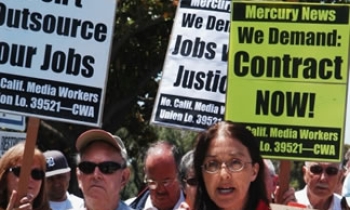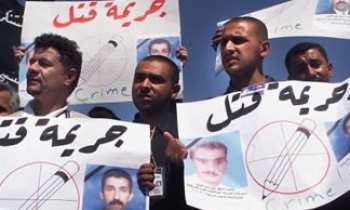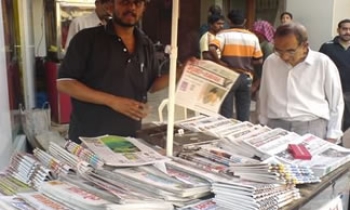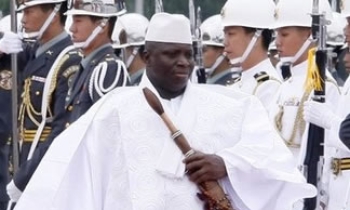NEW YORK One day after most of the country's newspapers falsely reported that 12 trapped miners had been rescued in West Virginia, editors published on Thursday corrections, explanations, apologies or defensive statements about what had happened. Some editors offered their personal perspectives in interviews, with remarks ranging from we-did-nothing-wrong to "we're all sick about this."
Toledo Blade Ombudsman Jack Lessenberry explained in a column, "We had the nation's major news services and governor of West Virginia saying the men were alive. I do not think a single editor in the country would have done things differently." Kurt Franck, managing editor of The Blade, added in an interview, "There was nothing we could do," due to the paper's print deadlines.
Most bullish of all was CNN president Jonathan Klein, who offered no apologies and hailed his cable network's performance, which resulted in three hours of faulty coverage. He said the sourcing of the report that the men were alive was "pretty solid," adding: "This situation points to the strength of TV news coverage because we were able to correct as better information developed."
But George de Lama, deputy managing editor for news at the Chicago Tribune, told USA Today, "This is not a good day for news organizations." At his paper, he added, "we're all sick about this. ... Conversations are underway across the newsroom on how to prevent it from happening again."
USA Today was one of the few major papers to run a note to readers, saying it "regrets the errors" in its account that ran in about half of its editions. While it traced the misinformation to the governor and to miners' family members, it concluded, "This documentation proved inadequate and fell short of USA Today's professional standards."
Howard Kurtz, the Washington Post's media writer, took one of the strongest stands: "Sure, the bum information came from West Virginia's governor, and the coal company shamefully refused to correct the record for hours. But the fault lies with the journalists for not instinctively understanding that early, fragmentary information in times of crisis is often wrong. You don't broadcast or publish until it's absolutely nailed down, or at least you hedge the report six ways to Sunday. This was, quite simply, a media debacle, born of news organizations' feverish need to breathlessly report each development 30 seconds ahead of their competitors.
"But do journalists blame themselves? Many, you will not be shocked to hear, don't."
Karen Magnuson, editor of the Rochester (N.Y.) Democrat and Chronicle, wrote today, "We certainly regarded it as a horrible travesty in our newsroom. We ran a correction on our Web site along with a new version of the story and reached out to hundreds of our readers to get a greater sense of how they felt about the handling of the story. We deeply regret that we were beaten by the clock and couldn't deliver the latest news to you in Wednesday's newspaper. We are assessing what happened to see what we can learn from this experience."
The Quad City (Iowa) Times partly blamed deadlines, but also wrote, "We're troubled to learn that Associated Press and the governor of West Virginia used hearsay from stressed family members to confirm false information. And we apologize to readers who no doubt shared our hope for a happy ending."
Kenneth Bunting, associate publisher at the Seattle Post-Intelligence, offered "apologies," adding, "I suspect that casting aspersions at inept communications by mining company officials, or trying to explain unforgiving production deadlines or printing and delivery schedules, do nothing to turn the monumental goof into a confidence builder among news consumers."
A large number of newspapers, however, defended what occurred. San Antonio Express-News Managing Editor Brett Thacker called it "an unfortunate situation," but explained, "When the governor proclaimed that the rescue was successful, that's about as credible a source as there is."
Stephen Buckley, managing editor of the St. Petersburg Times, said, "There was nothing in the stories or on broadcast that made us think we shouldn't be putting this story in the paper. I think we did the best we could under the circumstances."
"We used the best information we had," said George Rodrigue, vice president and managing editor at the Dallas Morning News.
In a blog entry at his paper's Web site, John Robinson, editor of the Greensboro (N.C.) News-Record, combined regret with defensiveness: "When we went to press, a little after 1 a.m., the story was correct. Or, rather, it reported what people were saying. We weren't there, of course, but I would consider the relatives and the governor as proper sources. In retrospect, they weren't. ... Should reporters on the scene have done more reporting, trying to pin down someone who truly knew? Yes, of course, but that's easy to say from the comfort of an office. Had one of our reporters been there, I doubt that we would have demanded other sourcing at that time of the night. ... But in the end, the story we published was wrong and we feel sick about that."
The New York Times published a short article on Thursday by Katharine Q. Seelye, which focused on problems at other papers, with just two sentences on The Times. While carrying the wrong report in its print edition, the paper "updated its Web site," she observed.
Earlier, on Wednesday, two top editors, Martin Baron at the Boston Globe and Leonard Downie Jr. of the Washington Post, had staunchly defended their initially wrong, but later corrected, coverage. Other editors wrote messages to readers on their Web sites explaining what happened.
The Associated Press, which supplied false reports on the miracle rescue to thousands of media outlets, said it had only reported "information that we were provided by credible sources -- family members and the governor,'' according to Mike Silverman, the news agency's managing editor. "Clearly, as time passed and there was no firsthand evidence the miners were alive, the best information would have come from mine company officials, but they chose not to talk.''
The New York Times said in a statement on Wednesday that it reported the miners alive based on "attributed sources, including a named official from the West Virginia Department of Military Affairs and Public Safety, and victims' family members.''
But Tom Rosenstiel, director of the Washington-based Project for Excellence in Journalism, said the episode showed the need for reporters and editors to make clear to media consumers what is and isn't known.









